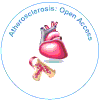Notre groupe organise plus de 3 000 séries de conférences Événements chaque année aux États-Unis, en Europe et en Europe. Asie avec le soutien de 1 000 autres Sociétés scientifiques et publie plus de 700 Open Access Revues qui contiennent plus de 50 000 personnalités éminentes, des scientifiques réputés en tant que membres du comité de rédaction.
Les revues en libre accès gagnent plus de lecteurs et de citations
700 revues et 15 000 000 de lecteurs Chaque revue attire plus de 25 000 lecteurs
Indexé dans
- Google Scholar
- Recherche de référence
- Université Hamdard
- EBSCO AZ
- Publons
- ICMJE
Liens utiles
Revues en libre accès
Partager cette page
Abstrait
Continuous Glucose Monitoring Sensor postprandial plasma glucose waveform study of breakfasts at McDonald’s using the GH-Method: math-physical medicine (No. 343)
Gerald C Hsu
The author was inspired to research his own meals by reading recent news of the sugar content in Irish Subway’s bread (see Method section). Could his personal dining data at another popular chain restaurant, McDonald’s, be applied under an amplified examination? International franchise restaurants usually operate under universal management guidance issued by its headquarters regarding the business style, Standard Operating Procedures (SOP), and some selected food material supplies from the central kitchen. He is quite sure that some local franchisees may attempt to make changes to meet their local business, operation, or environmental needs. However, if they change the food ingredients or certain nutritional amounts, similar to the incident with the Subway franchises in Ireland, then the impact on their customer’s health conditions can be identified and traced.
After reading that specific news, the author decided to review his collected 4,050 meals data from 5/5/2018 to 1/18/2020 (1,350 days). First, he sorted them into four different national groups: The US,UK/Canada, Japan, and Taiwan. Then, he investigated their Continuous Glucose Monitor (CGM) sensor Postprandial Plasma Glucose (PPG) waveforms and data.
The author finally proved the linkage between McDonald’s carbs/sugar amount and his sensor PPG wave characteristics via a comparison study of Japan vs. US and Taiwan vs. US as listed below. A similar finding also existed between Japan vs. UK/Canada and Taiwan vs. UK/Canada.
Japan vs. US
carbs 87%, glucose 93%-96%
Taiwan vs. US
carbs 79%, glucose 90%-92%
Japan vs. UK/Canada
carbs 76%, glucose 93%-97%
Taiwan vs. UK/Canada
carbs 69%, glucose 91%-97%
The reduction of 13% to 31% on carbs/sugar amount in the McDonald’s muffin has resulted in a <10% glucose reduction on three PPG levels, average, peak, and maximum. In fact, this finding is not as severe as the impact when adding more than 8% sugar into bread to attract more customers in the Irish Subway case. The author can definitely calculate how much PPG increase amount for diabetes patients in Ireland will be from this extra 8% of sugar added into Subway’s bread in Ireland.
The author speculates the additional value of this study in regard to his ready acquired diabetes knowledge. However, it has indeed reinforced his prior findings concerning the high correlation existed between his carbs/sugar intake amount and his measured PPG value. Nevertheless, it is still a remarkably interesting side-track research project for him. The article addresses the business decision-making and operational practice versus the price paid to influence customers, using the entry point of glucose variance. In addition, he has learned more about the glucose waveform characteristics by using various tools from his developed GH-Method: math-physical medicine.
Revues par sujet
- Agriculture et Aquaculture
- Biochimie
- Chimie
- Food & Nutrition
- Génétique et biologie moléculaire
- Géologie et sciences de la Terre
- Immunologie et microbiologie
- Ingénierie
- La science des matériaux
- Le physique
- Science générale
- Sciences cliniques
- Sciences environnementales
- Sciences médicales
- Sciences pharmaceutiques
- Sciences sociales et politiques
- Sciences vétérinaires
- Soins infirmiers et soins de santé
Revues cliniques et médicales
- Allaitement
- Anesthésiologie
- Biologie moléculaire
- Cardiologie
- Chirurgie
- Dentisterie
- Dermatologie
- Diabète et endocrinologie
- Gastro-entérologie
- Immunologie
- La génétique
- Maladies infectieuses
- Médecine
- Microbiologie
- Neurologie
- Oncologie
- Ophtalmologie
- Pédiatrie
- Recherche clinique
- Soins de santé
- Toxicologie

 English
English  Spanish
Spanish  Chinese
Chinese  Russian
Russian  German
German  Japanese
Japanese  Portuguese
Portuguese  Hindi
Hindi